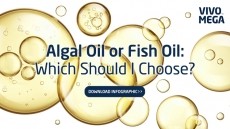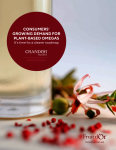China
After much waiting, China establishes long-chain omega 3 guidelines

Eicosapentaenoic acid (EPA) and docosahexaenoic acid (DHA) are found in cold water fish, and contain five and six double bonds on their long structural chain, making them highly unsaturated fat.
As vital nutrients, these polyunsaturated fats play a very important role with the function of our bodies by helping form neural transmitters, such as phosphatidylserine, for brain function, maintaining normal eye function and regulating cell activity for healthy cardiovascular function.
According to the Chinese Nutrition Society (CNS), and quoted in a news alert from Goed, the Global Organisation for EPA and DHA Omega 3s, recommended intake for adults should amount to between 250mg to 2,000mg per day.
Quantities of up to 100mg per day are sufficient for children from birth to four years; while pregnant and lactating women should take 250mg per day of EPA and DHA, of which 200mg should be DHA
However, Goed noted that the society did not recommend any specific level of intake for children between four years old and 18 years old.
The CNS is currently in the process of compiling a wider update to dietary reference intakes, with the Chinese government expected to release further details over the next three months to explain the thinking behind the new recommended levels.
With an estimated 188,000 people dying in China because of low omega 3 intake, according to the World Health Organisation, Chinese consumers critically need to increase their their consumption of EPA and DHA.
"The official reference intakes will be an important step forward in educating the public consumers in China, where there is an acute need for increasing EPA and DHA intakes," Goed said.
According to an article published in the British Medical Journal, the average Chinese intake of long-chain omega-3s only averages 37mg per day—a figure that is significantly lower than what features in the new official reference.















